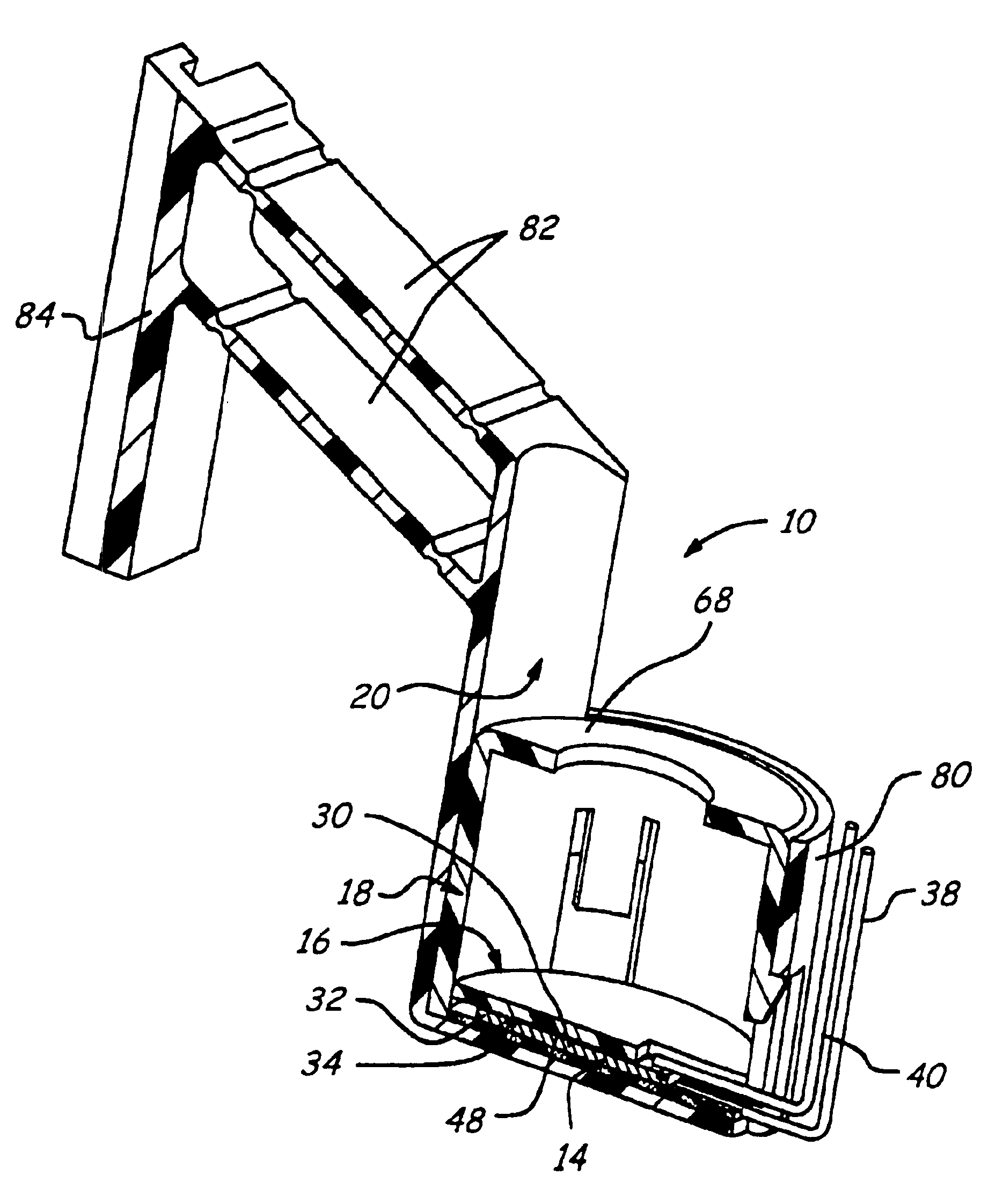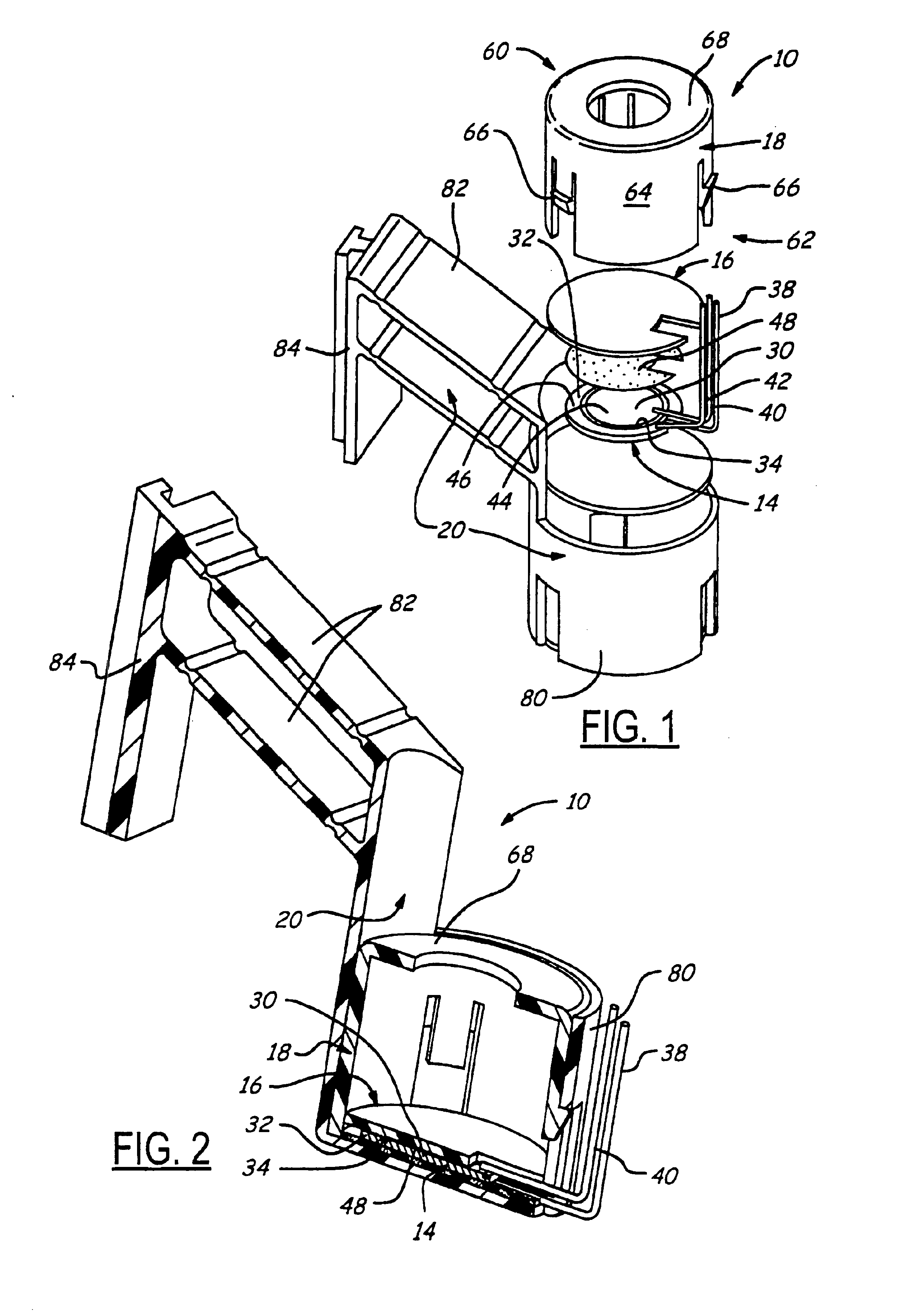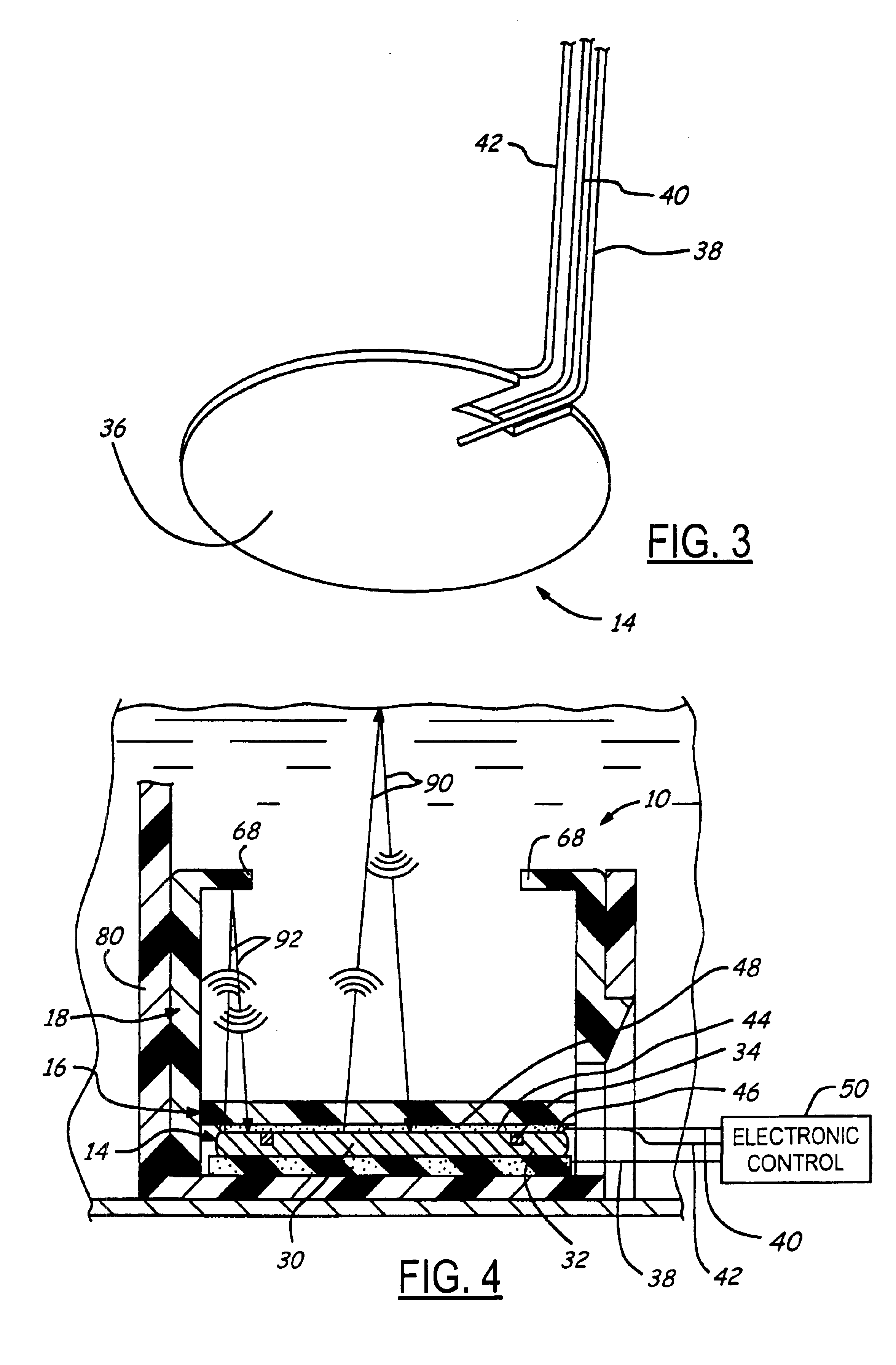Fluid level sensor
a technology of fluid level sensor and sensor body, which is applied in the direction of liquid/fluent solid measurement, instruments, machines/engines, etc., can solve the problems of reducing the size and cost of the sensor, unable to perform both transmission and reception functions for both reference and measurement signals using a single transceiver, and improving the design and operation. , the effect of simple and economical manufactur
- Summary
- Abstract
- Description
- Claims
- Application Information
AI Technical Summary
Benefits of technology
Problems solved by technology
Method used
Image
Examples
Embodiment Construction
[0019]With reference to FIGS. 1 and 2, there are shown two different views of a first embodiment of the fluid level sensor 10 of the present invention. Typically, fluid level sensor 10 is located towards the bottom of a fluid container, preferably a vehicle fuel tank, and includes a transceiver that emits ultrasonic signals upwardly into the surrounding fluid. Some of the emitted signals, referred to as measurement signals, reflect off of the fluid surface and travels back to the transceiver, such that the roundtrip echo time of the signals may be used to measure the fluid level. In order to further increase the accuracy of the sensor, some of the emitted ultrasonic signals, referred to as reference signals, are purposely directed towards and reflect off of a reference element, which is positioned a known distance from the transceiver. Because the distance and roundtrip echo time of the reference signals are known, a precise signal velocity value may be calculated. This velocity val...
PUM
 Login to View More
Login to View More Abstract
Description
Claims
Application Information
 Login to View More
Login to View More - R&D
- Intellectual Property
- Life Sciences
- Materials
- Tech Scout
- Unparalleled Data Quality
- Higher Quality Content
- 60% Fewer Hallucinations
Browse by: Latest US Patents, China's latest patents, Technical Efficacy Thesaurus, Application Domain, Technology Topic, Popular Technical Reports.
© 2025 PatSnap. All rights reserved.Legal|Privacy policy|Modern Slavery Act Transparency Statement|Sitemap|About US| Contact US: help@patsnap.com



